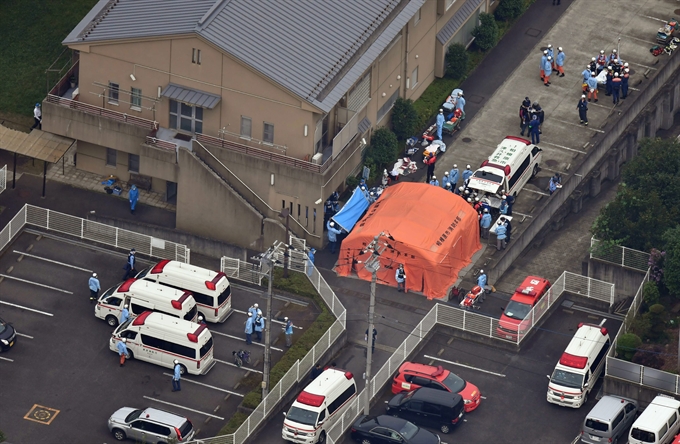|
19 killed in knife rampage at Japan care home

SAGAMIHARA, Japan - At least 19 people were
killed when a knife-wielding man went on the rampage at a Japanese care
centre for the mentally disabled on Tuesday, officials said.
A
26-year-old man who said he was a former employee of the facility later
turned himself in at a police station, admitting to officers: "I did it."
According
to the Asahi Shimbun daily, he also said: "The disabled
should all disappear."
A fleet of
ambulances, police cars and fire trucks converged on the one-storey Tsukui
Yamayuri-en centre nestled against forested hills in Sagamihara, a city of
more than 700,000 people west of Tokyo.
A fire
department spokesman said that another 25 were wounded, 20 of them seriously,
in the attack which ranks as one of the worst mass killings in Japan’s
postwar history.
"Doctors
confirmed the deaths of 19 people," the spokesman said.
Kyodo news
agency identified the attacker as Satoshi Uematsu and said he had been
arrested.
Police said
they received a call from the centre around 2:30am (1730 GMT Monday), raising
the alarm that a man armed with a knife had entered the facility.
Public
broadcaster NHK said he had broken a glass window on the first floor to get
into the building before stabbing those inside.
It also
said police found several knives in his bag, some of which were covered with
blood.
Police said
the assailant turned himself in shortly after 3:00am, admitting he had
carried out the attack at the centre which on Tuesday was cordoned off, and
draped with yellow "Keep Out" tape.
Japan has
one of the lowest rates of violent crime in the developed world, and attacks
involving weapons of any kind are unusual.
But the
country has seen outbursts of random as well as planned violence.
In 2001,
eight children at a primary school in Osaka were stabbed to death.
And in 2008
a man ploughed a rental truck into a crowd of shoppers in Tokyo’s bustling
Akihabara district before he stabbed passers-by, killing seven people and
injuring 10 others.
After that
rampage, Japan banned possession of double-edged knives with blades longer
than 5.5cm, punishable by up to three years in prison.
Japan’s
most notorious attack came in 1995, when members of the doomsday cult Aum
Shinrikyo released sarin gas in the Tokyo subway system.
Thirteen
people were killed and thousands of commuters fell ill in a crime that deeply
dented the national sense of security.
But Japan
has recently seen an increasing number of cases of attacks on the weak and
vulnerable.
In
February, a former nursing home worker was arrested for allegedly throwing an
87-year-old resident to his death from a balcony.
The former
employee also reportedly admitted killing two more residents in their 80s and
90s by throwing them from balconies in 2014.
There have
also been cases of family members killing ailing and ageing spouses or
parents suffering from dementia in Japan’s rapidly ageing society. - AFP
|
Thứ Ba, 26 tháng 7, 2016
Đăng ký:
Đăng Nhận xét (Atom)
Không có nhận xét nào:
Đăng nhận xét